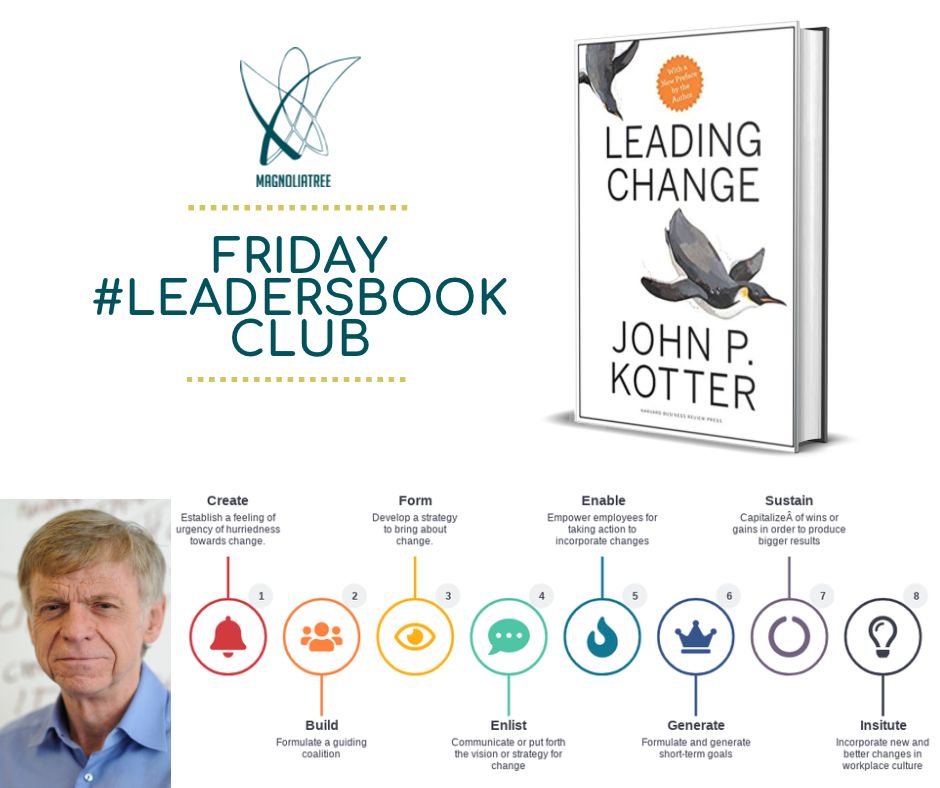
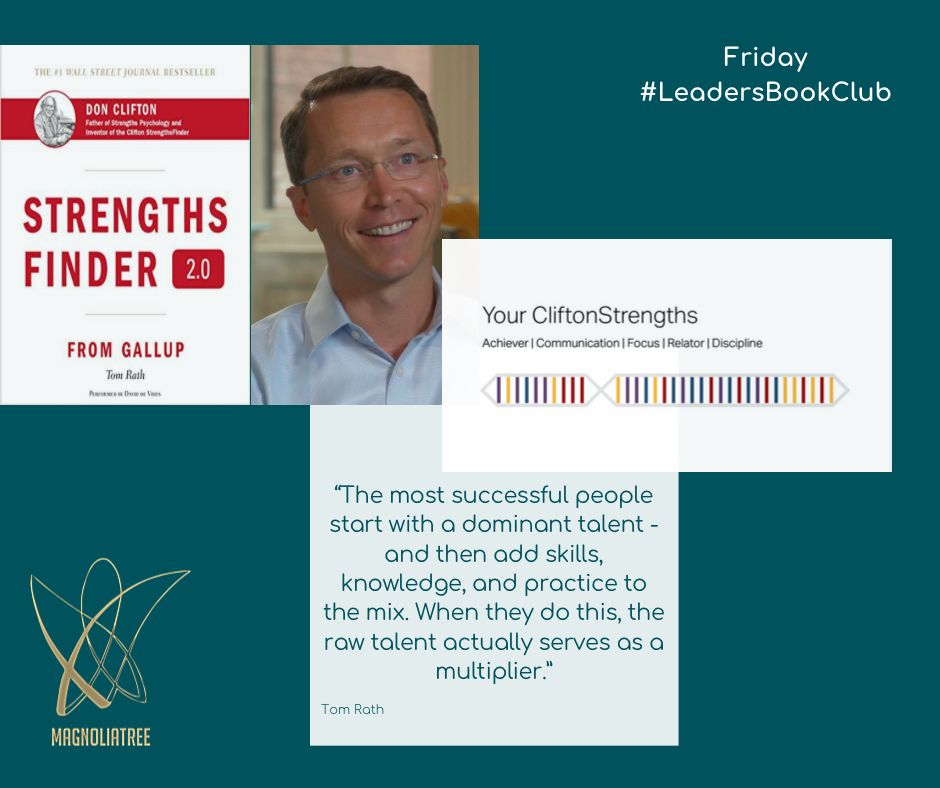
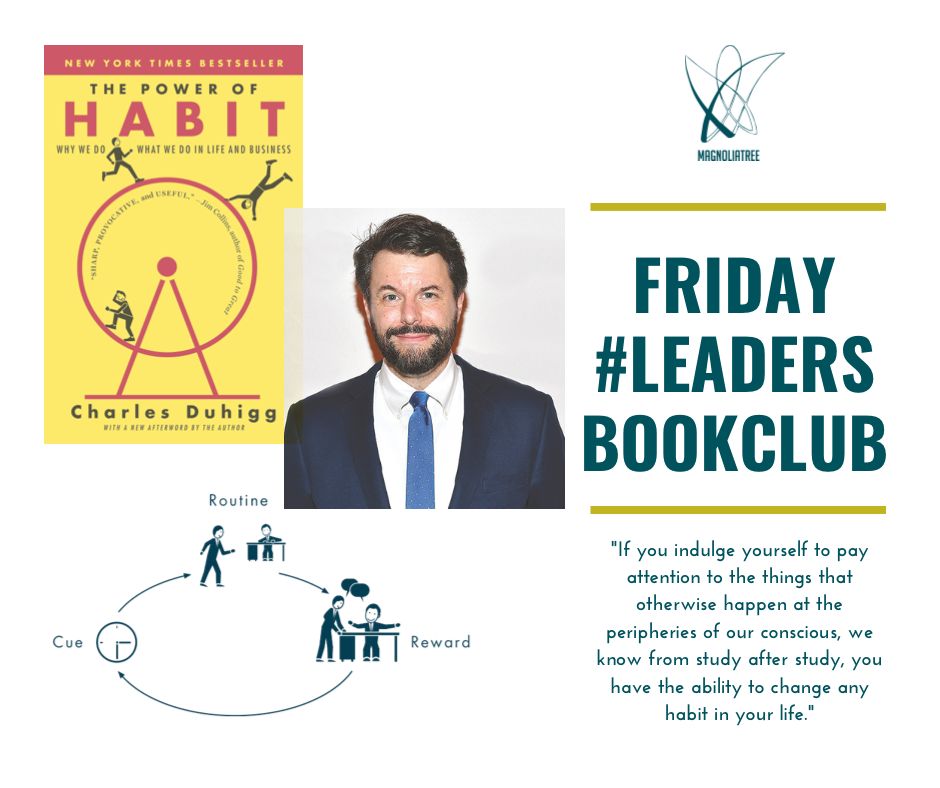
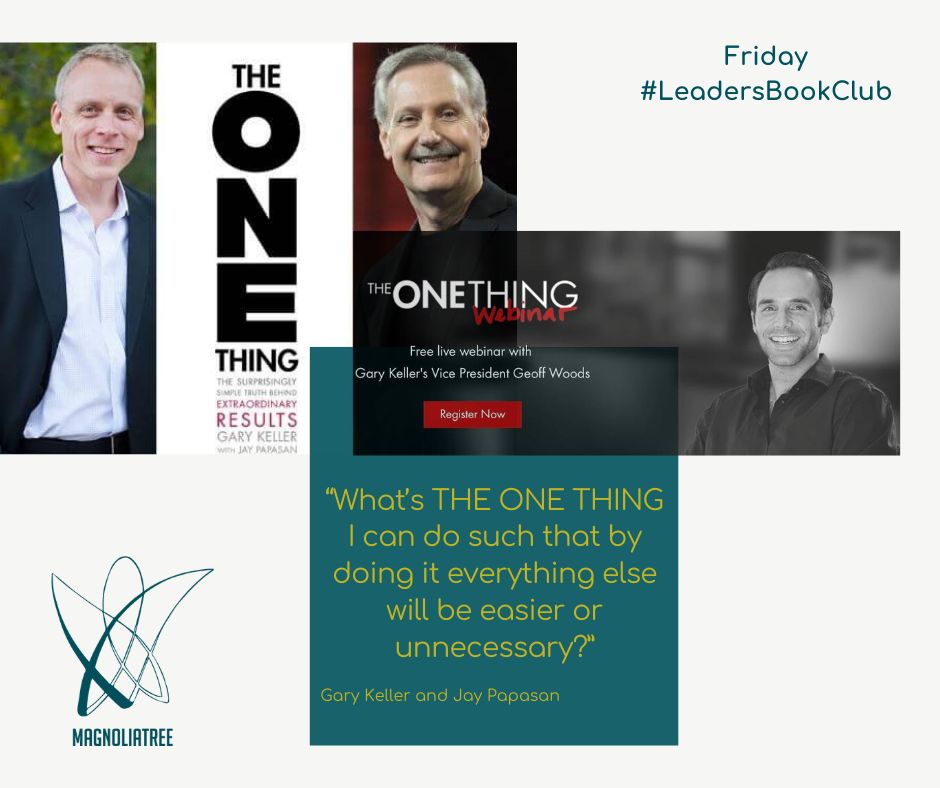
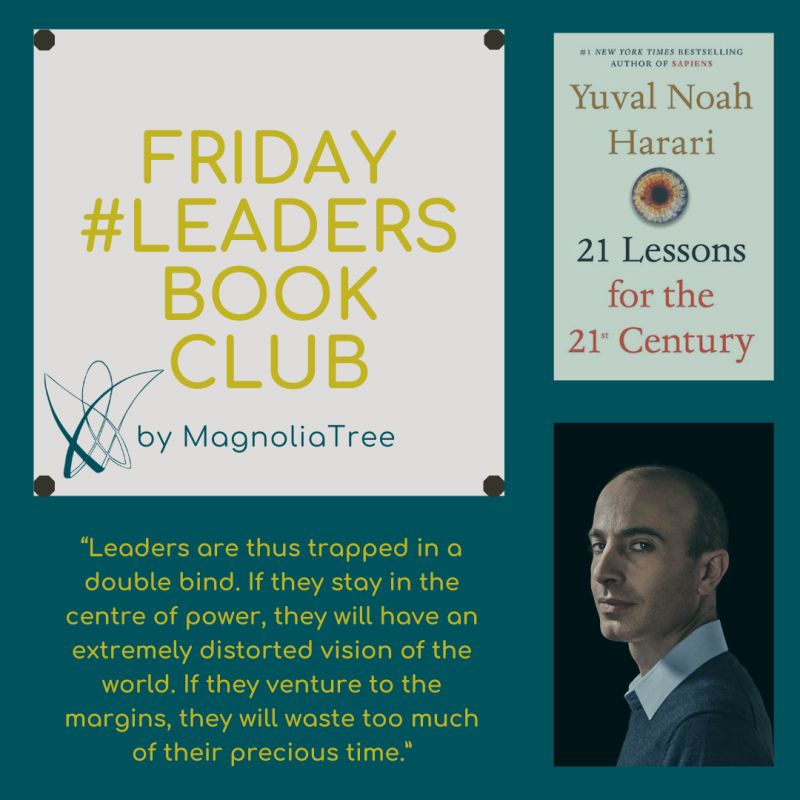

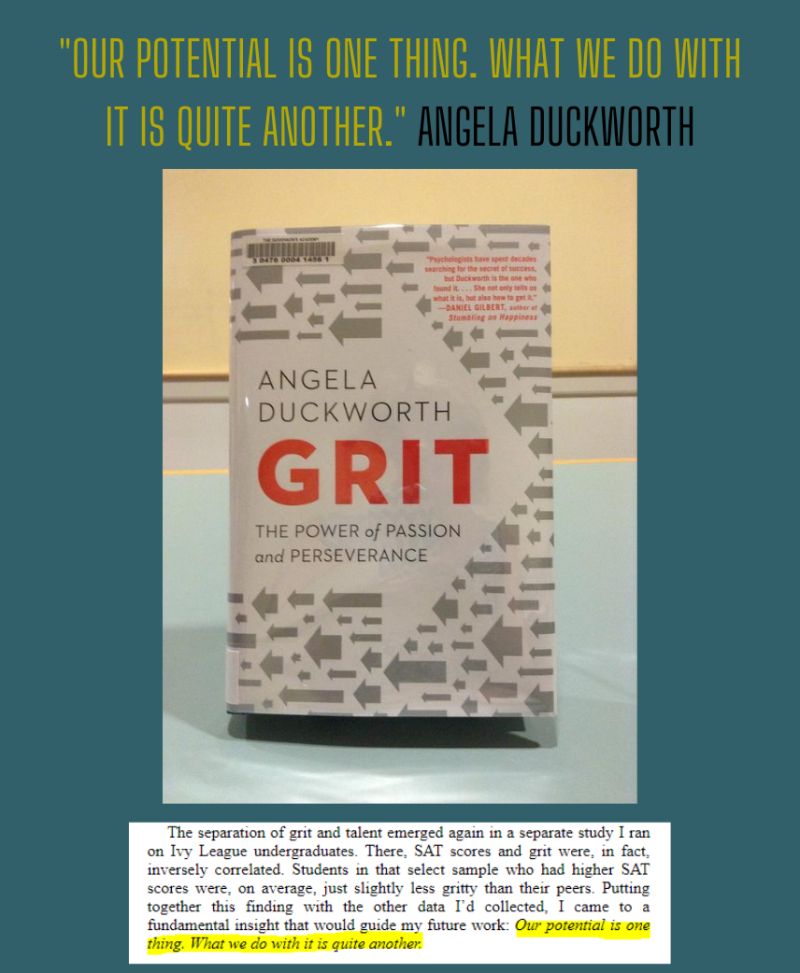
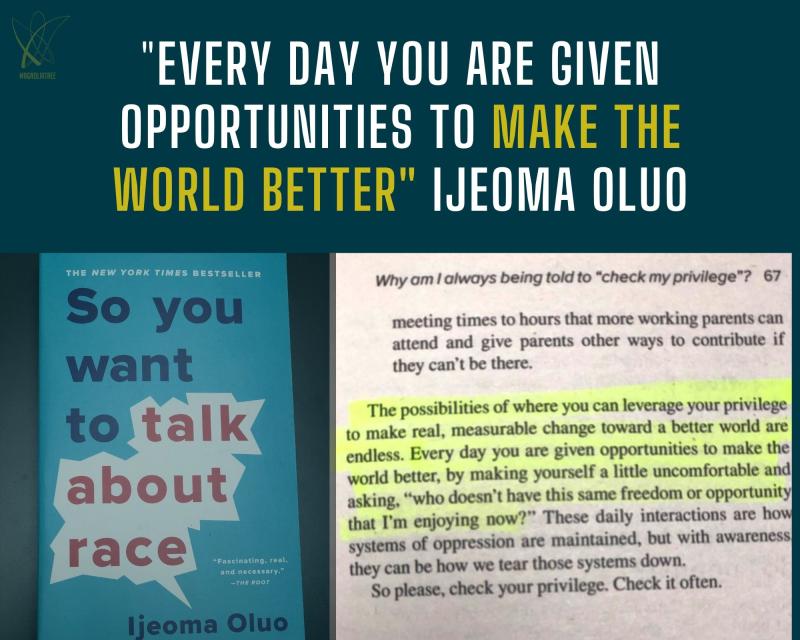
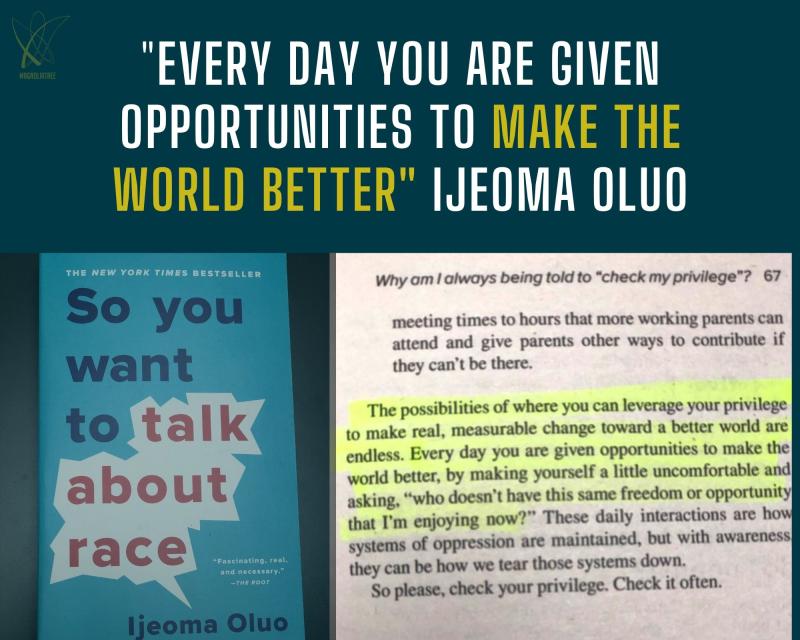
While Oluo’s book is a hard look at systemic (American) racism through the author’s personal anecdotes and research, it is broadly applicable to racism in all walks of life. The book includes direct feedback and instruction on how to approach racism in conversation with others, in your own subconscious, and in systems at large. It can be difficult to look inwards and recognize the inherent biases we have, but “So You Want to Talk About Race” is a handbook towards profound reflection and future action.
Amid global uproar over the veiling of systematic racism, no other book could be more topical.
Become an #antiracist.

#grit – firmness of mind or spirit; unyielding courage in the face of hardship or danger
In her book, Angela Duckworth explores the quality of grit as a true measure of #success over talent.
She uses case studies to explore how grit can be found in the lives of our leaders, athletes, and elite students.
After explaining the importance of grit, Duckworth shows how we can foster it in our lives and through this nurturing become more passionate and resilient people.
This book is a great read for #leaders, but is useful to anyone, regardless of their field.

This book is an essential read for anyone in a position of leadership to better understand the transitions they face in their private lives and in their business ventures.
„A dozen little endings, hardly noticed in the day-to-day rush, plunge us into little wildernesses; and a dozen little beginnings take shape in the confusion.“ – William Bridges
While his book primarily focuses on personal transitions, many of his insights and suggestions are deeply interrelated with organizational transitions and #businesstransitions.
Bridges begins his book by identifying what is a transition and giving all transitions a general structure.
1. An Ending
2. A Neutral Zone
3. A New Beginning
He also makes a key distinction between #change and transitions: change is situational, while transitions are psychological.
The book then explores examples of transitions in both private and work life.
Bridges ends by ruminating that with every ending, a dozen new #beginnings emerge.

Since knowledge is a valuable resource and value driver for leaders, we decided that this book must be on the list for our #LeadersBookClub. #Leaders have to be able to make well-informed and well-considered decisions from multiple perspectives. This book offers a broad picture of key future trends which any leader should reflect on.
Yuval Harari in his usual storytelling writing style provides us with a significant amount of information on current subjects such as A.I., data and the privacy concerns that come along, global issues, fake news and so many other challenges we are about to face as human race. Through his work the well-known historian manages to start a pressing global conversation.
This fascinating book pieces together a series of essays – some of them also published in different newspapers like @NZZ or @NYTimes – and has the purpose of confronting the author’s fears about the present. Overall the 21 chapters cover topics like new #work, nationalism, religion, education or immigration. Here and there the author offers pieces of advice, including tipps for dealing with #fakenews news or fighting terrorism.

Everyone craves for something – for some it might be time, for others it could be #success. In times of crisis the constant #change disrupts people’s expectations of the future. This book guides you into adopting a #leadership #mindset and helps finding the one thing that delivers extraordinary results.
“What’s THE ONE THING I can do such that by doing it everything else will be easier or unnecessary?” is the main question the The New York Times best-selling authors are focusing on.
Beside the journey of finding your one thing, their work also teaches you about productivity, the importance of setting yourself up for big goals or having a schedule. Although both authors support the idea of creating a habit, they speak against the „myth of a balanced life“: „The reason why we should not pursue balance is that magic happens, not in the middle, but in the extremes“.
In addition to the book you can get help in forming your first power #habit on Geoff Woods’ official website. As the VP of The One Thing states, their mission is to teach people how to live a life of focus so you can have more by doing less.
Have you already found your one thing? If so, let us know in the comment section below.

In the middle of the COVID-19 #crisis, many of us find ourselves in unusual situations. Plenty are working from home facing a host of new challenges such as falling from our usual routines. In these situations, it is essential to maintain awareness of both the habits we have lost and the new habits we are forming to preserve a healthy balance of social and physical activity.
In his book, Duhigg explores the #routines that drive on average between 40-45% of our daily decisions. The author focuses on #research studies that reveal the realities of forming and breaking habits. Crucial to this understanding is “the habit loop.” He explains that every #habit loop begins with a CUE, which starts a practiced action (the ROUTINE), ending with a REWARD.
C. Duhigg teaches us through his work that in order to break a habit, we need to preempt the cues and rewards associated with it. We can do this by premeditating how we will respond to a specific cue with a specific response. To learn more about the intricacies of habit breaking and forming, we recommend acquiring a copy of the #book.
Have you picked up any good habits during the #pandemic? If so, please let us know in the comment section below.

“Strengths Finder 2.0” accentuates a novel way to celebrate diversity by helping people understand their individual #strengths and how to use these to their advantage.
Based on years of research and studies, Gallup together with Tom Rath introduced the #CliftonStrenghts test and the book as a guide. 177 questions and approximately 30 minutes later you get the results. A list of 34 unique strengths that a person can possess, five of which tend to dominate one‘s talents. Once complete, you get pages worth of tasks, ideas and suggestions on how to best lead your life and career.
This is not a book. It’s a tool to foster #success and #self-fulfillment. Having said that, we would like to recommend the book to everyone but especially to #managers, #leaders or just in general to people working in teams since knowing each other’s strengths is a must in the work field. Similar to the author’s ideas, we also believe that opposing strengths can lead to the strongest #partnerships.
My top three strengths are Deliberative, Futuristic and Relator. What are your top strengths? Please let us know in the comment section below.
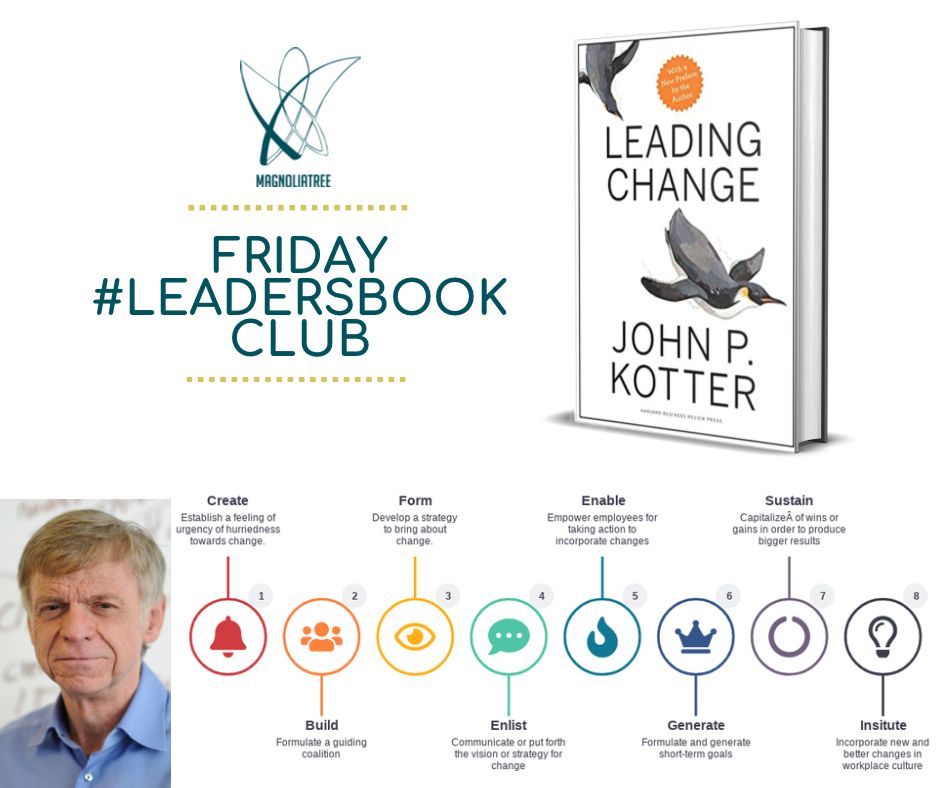
What can we do to have a better chance to implement change?
The retired #HarvardBusinessSchool Professor of #Leadership comes up with an 8-step-process that can help any organization to lead in an everchanching world. According to him, all organizations that go through a change process should have a clear image of how the future will look like and leaders determined to get there.
I summarized here what I believe to be the most important of his teachings:
– If leaders do not convey a great sense of urgency, most likely no change will happen.
– Change can be considered a success when a critical mass of individuals adjusts so that the rest follows.
– Integrating employees into existing systems and cultures is a lot simpler than asking them to change.
– Staying flexible is essential, since no plan can be perfect.
– Last but not least: prevent regressive behavior! One should make sure the right systems, procedures and processes are in place so that going back to the old way is impossible.
There is no shortcut for change management. As the author advises, leaders should take it step by step or better said: one person at a time.
What do you think is the most important thing when trying to implement change?

